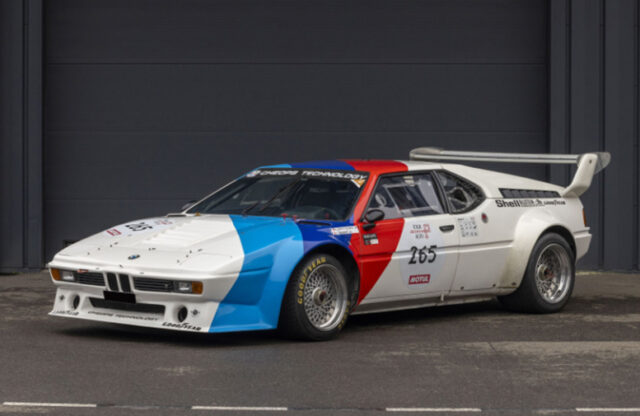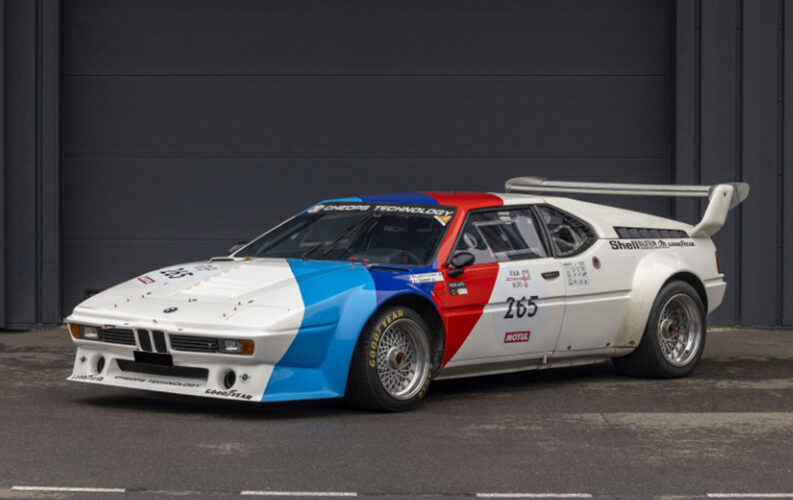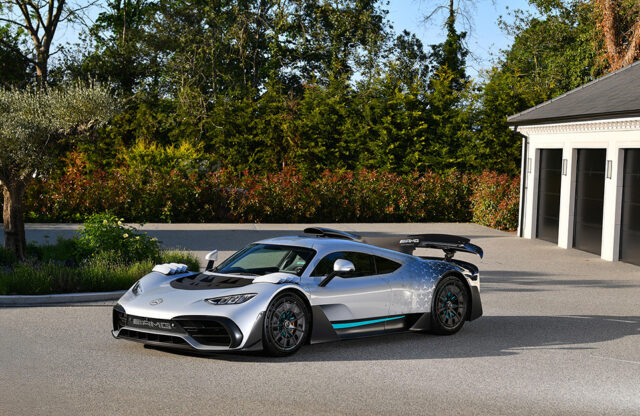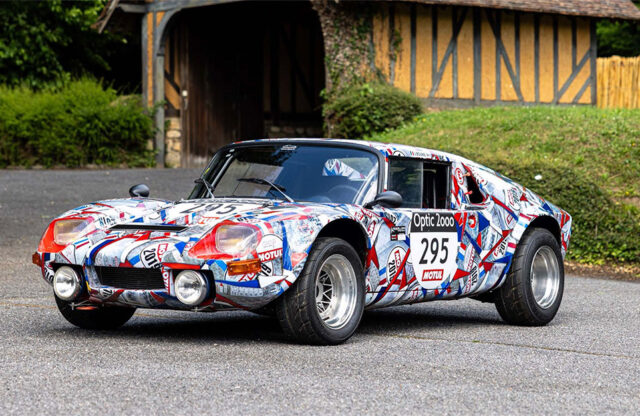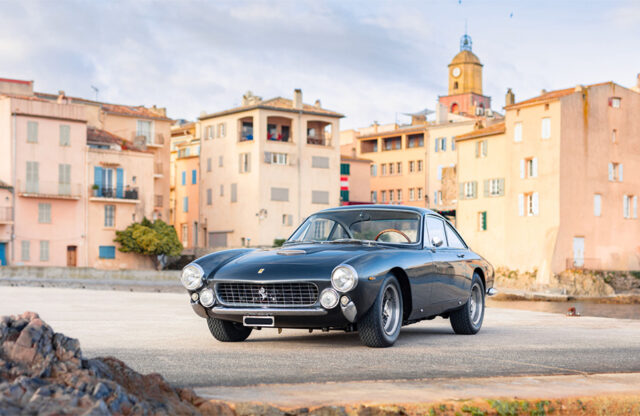WORDS: NATHAN CHADWICK | PHOTOS: ARTCURIAL/BONHAMS/OSENAT/RM SOTHEBY’S
With four auction houses bidding for glory over the Rétromobile week in Paris, France, there were always going to be winners and losers. It has become clearer that there is a gulf between the North American and European markets in terms of tastes.
This divergence of taste is easily seen in the modern hypercar market. While the Scottsdale sales saw plenty of success, European buyers largely steered clear of high-value machines, with some exceptions (detailed below). We mused on the tech/crypto market not yet entering its bull stage for this year, but anecdotally the appetite for such extrovert cars isn’t quite back to where it was in Europe – however, there were some notable exceptions.
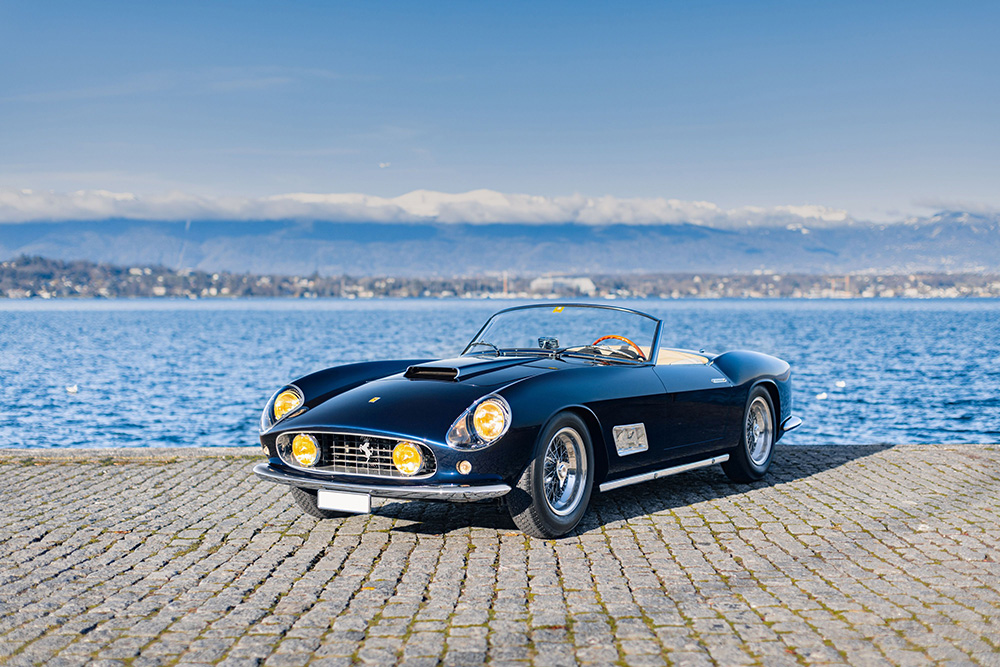
It wasn’t only new metal – or carbon fibre – that failed to find their feet; Artcurial brought along a fleet of Enzo-era Ferraris, largely from a Swedish collection but also a 250GT LWB California Spyder (pictured above). The latter was the highest-estimate lot through all four auction houses, and while Bonhams and RM Sotheby’s sold their high-estimate Maranello machines, Artcurial struggled to shift its selection.
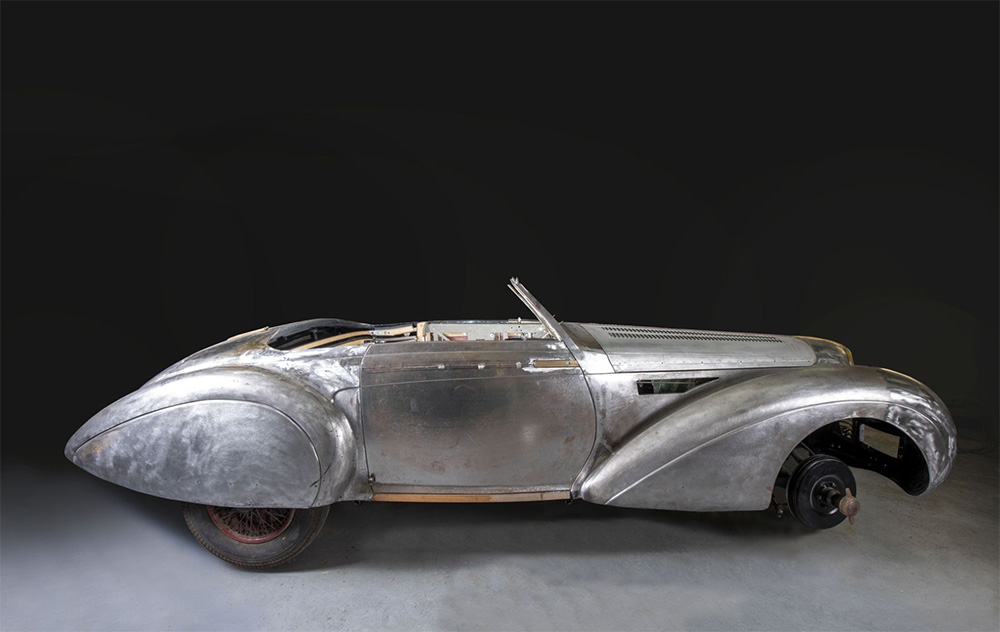
Paris being Paris, special-bodied French pre- and post-war cars are always a fascinating flavour that truly makes Rétromobile week unique. This year, however, the news that the Mullin collection was going to be dispersed hit just before the sales. With the promise of even more exotic cars hitting the market, an already well catered-for market didn’t quite produce the results hoped for – the above 1947 Delahaye 135 MS Cabriolet ‘Vedette’ didn’t make half its pre-sale estimate at Osenat (more on that below).
We’ve picked out some of the more interesting results and no sales below; what had your trigger finger twitching during Rétromobile sales week?
Artcurial
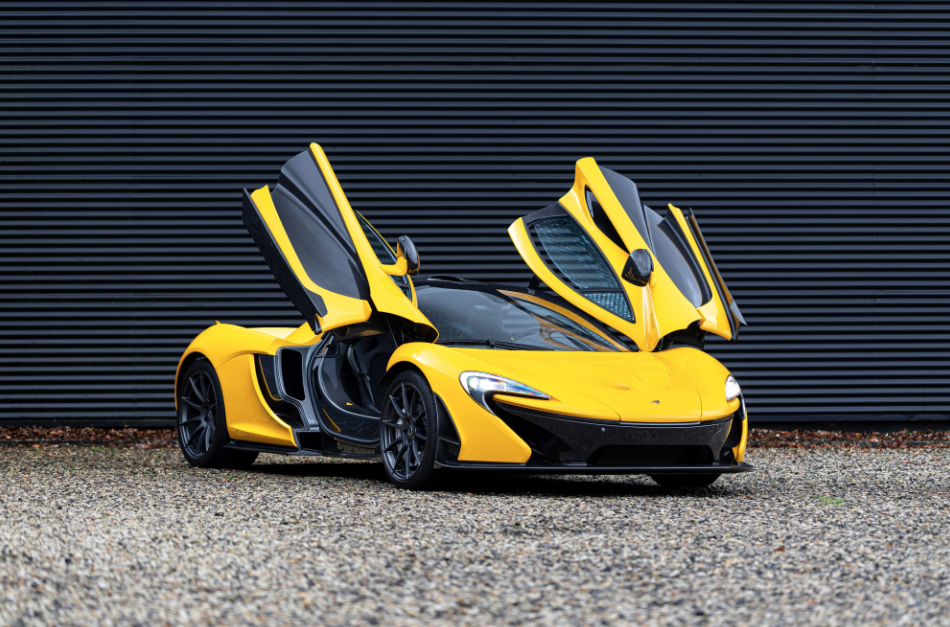
Hybrid hypercars have been having an awkward time of it – RM’s Ferrari LaFerrari failed to sell, as did the Porsche 918. Only one 918 has sold out of the three offered in 2024 (the 2015 example at Barrett-Jackson’s Scottsdale sale), and a LaFerrari hasn’t found a home at auction since January 2023; indeed, technical problems forced Barrett-Jackson’s example to be withdrawn from sale in Scottsdale. But what of the third member of the holy trinity – the McLaren P1?
The appetite appears to be there – seven standard-model P1s have sold over the past 12 months, and two in 2024 so far. RM Sotheby’s sold its 2015 example for €1,017,500 against a €900k-1.2 million estimate, while Artcurial’s second-highest sale was for the 2014 example shown above. First delivered to the UK, it was the 14th built, and it sold for €1.358m against a €1.2m-1.5m estimate.
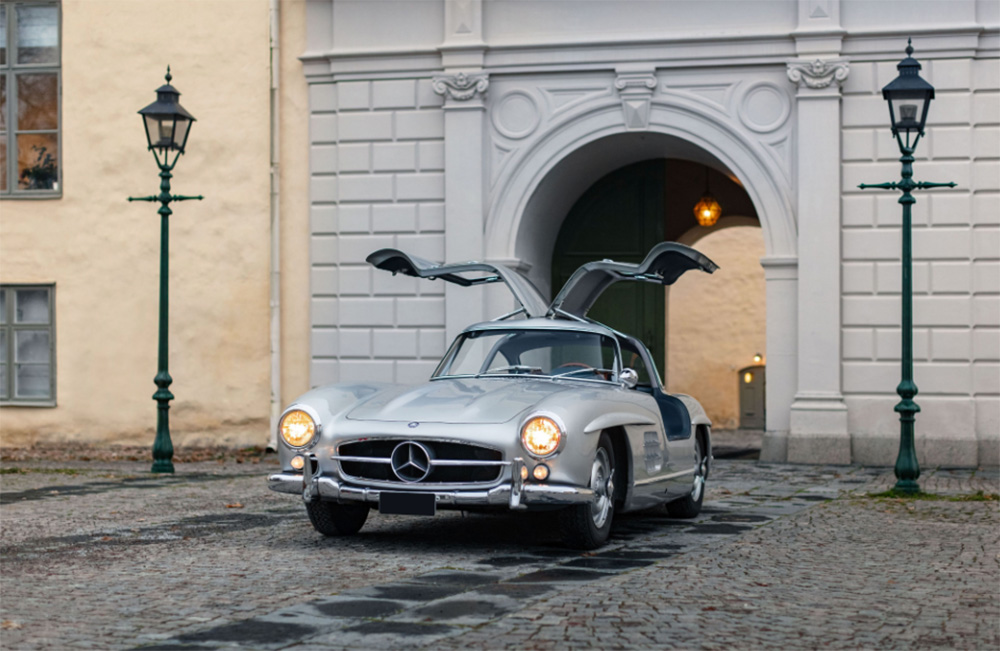
Artcurial’s leading sale was this 1955 Mercedes-Benz 300 SL Gullwing, which was owned by the same New York family from 1955 to 2000. One of 400 Gullwings ordered with centre-lock Rudge Wheels, its next owner was Nick Soprano/Motor Classic & Competition; it passed through two collectors before joining the vendor’s stable in 2004. Four years later it was sent to Paul Russell for a partial restoration, before being imported into Europe by its Swedish owner. It sold for €1,427,440 against a €1.1m-1.5m estimate. A 1962 300 SL Roadster failed to sell against a €1.2m-1.4m estimate.
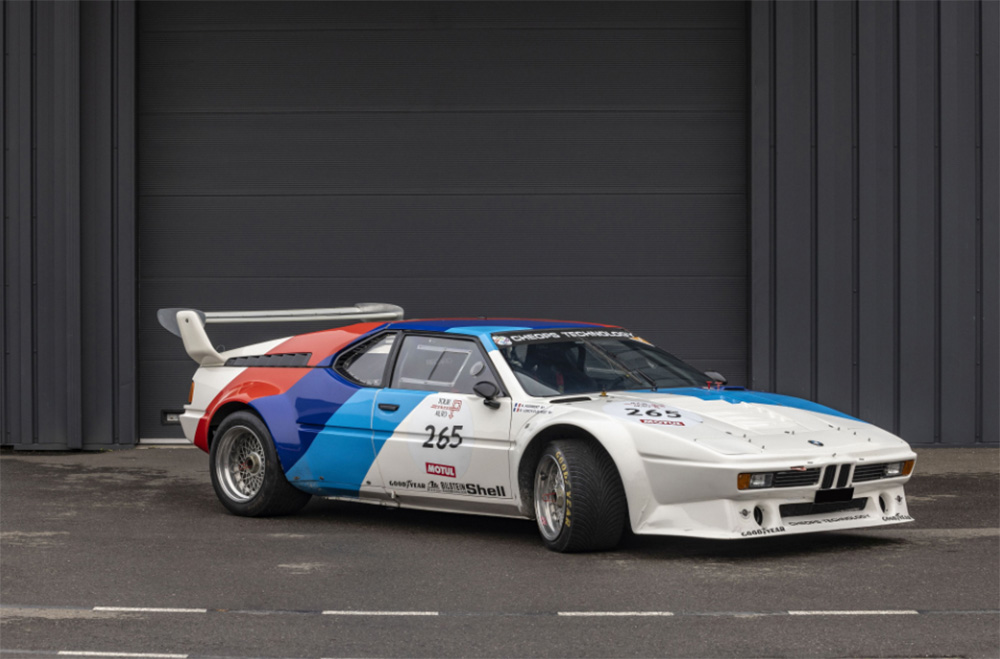
This 1980 BMW M1 Procar actually began life as a road model. Sold new in Italy, it was upgraded to Procar specifications in 1982 by Walker Brown Racing Team. It would go on to compete in IMSA’s GTO category between 1983 and 1986, with Dallas Motorsport running the car in 1986. After its racing duties concluded that year, it was bought by Frank Sbarro in Switzerland, and restored in 2005 to compete at the Le Mans Classic. The vendor bought the car and had it restored again, with the process completed in 2019. It then took part in the Tour Auto several times. It sold for €1,015,584 against a €1m-1.2m estimate.
Bonhams

Bonhams’ leading car pre-sale was, unsurprisingly, its highest achiever, settling at just under mid-estimate at €3.91m. One of only 12 Ferrari Enzos ordered new in Nero Daytona, and one of just three ordered in black with a red interior, it was first delivered to France via Charles Pozzi, before spending much of its life as a static exhibit in Belgium. It had covered 9500km on consignment. An unsurprising result, given that Enzos have been in demand in any colour other than red over the past couple of years, often attracting higher values than red cars. RM Sotheby’s red Enzo didn’t sell, and was on offer post-auction for €3.1m; that had an ‘off’ in its life, however, although it was later repaired to Classiche Red Book certification standards.
The more surprising Ferrari results came courtesy of a pair of estimate-busting Testarossas. The first, a black 1988 example estimated at between €140k and €180k, eventually sold for €212,750, while a red 1996 F512M estimated at between €250k and €280k, sold for €299k. The interest in 1980s Ferraris was further piqued – although to a lesser degree – by the similarly estimate-busting 1988 412i manual, with sold for €97,750 against a €70k-90k estimate.

Bonhams brought a lot of Aston Martins to Paris, and the most fascinating was the above car, the very last Aston Martin V8 Vantage Volante ever built. It was owned by the then chairman of the company, Victor Gauntlett. Built in Prince of Wales specification – in effect, all the Vantage performance upgrades without the visuals, as chosen by the current King – the car was kept by Gauntlett for three years before being sold to its next owner. Aston Martin Works subsequently upgraded it to 6.3-litre specification and covered it to left-hand drive. It was then purchased by the third owner in 2005 and refurbished by Aston Martin Works Service; as part of this overhaul, it was converted to automatic transmission. Estimated at €350k-500k at Rétromobile, it sold for €471,500.
The other Astons had a mixed bag of results: a red 1967 Aston Martin DB6 Vantage sauntered past its €140-200k estimate to €230k, while a silver 1966 DB6 estimated at €140k-200k went for even further past its estimate, at €258,750. On the other hand, a no-reserve 1963 DB4 Vantage estimated at €300k-400k managed only €253k. There was better news among the modern Astons, with a luridly orange inside and out 2012 Virage Volante going for €132,250 against an €60-80k estimate, and a 2009 Vantage V12 manual going for €155,250 against a €50k-70k estimate – although it must be stated that both cars had covered less than 250km.

The second-highest finisher on Bonhams’ lot list was this 1969 Lamborghini Miura P400 S. Originally delivered to Paris in Arancio with a blue leatherette interior, it was later restored by its third owner in the 1980s. As part of this process, the bodywork restoration by Battaglia Bolognesi involved the mid-section being replaced with one from chassis 4118, along with the rear bonnet from chassis 3679, before being repainted in Giallo Fly. The interior was retried by Paratelli in black leather, while other bits of trim came from a P400.
The mechanicals were restored by Edmond Ciclet, which involved the cooling system being fitted with a turbine to aid water flow, while the engine was replaced with the one from chassis 3691. The third owner covered just 100km between 1986 and 2008, and the vendor had only stored it since acquiring it. Despite the ‘bitsa’ nature of the car, its lack of registration documents and the fact that Bonhams advised recommissioning in its listing, it sold for €954,500 against an €800k-1.2m estimate. The question is: recommission to usable state, or the mother of all jobs to reunite all the original bits? If the owner is out there, please do let us know…
Other Lamborghini highlights included a 1994 LM002 that sold for €345k against a €350k-500k estimate, a 1983 Jalpa P350 that sold for €71,875 against an €80-100k estimate and a 1966 400GT that sold for €244,375 against a €160k-220k estimate. The 1981 Geneva Motor Show Countach LP400S sold for €621k against a €580k-700k estimate.
Osenat
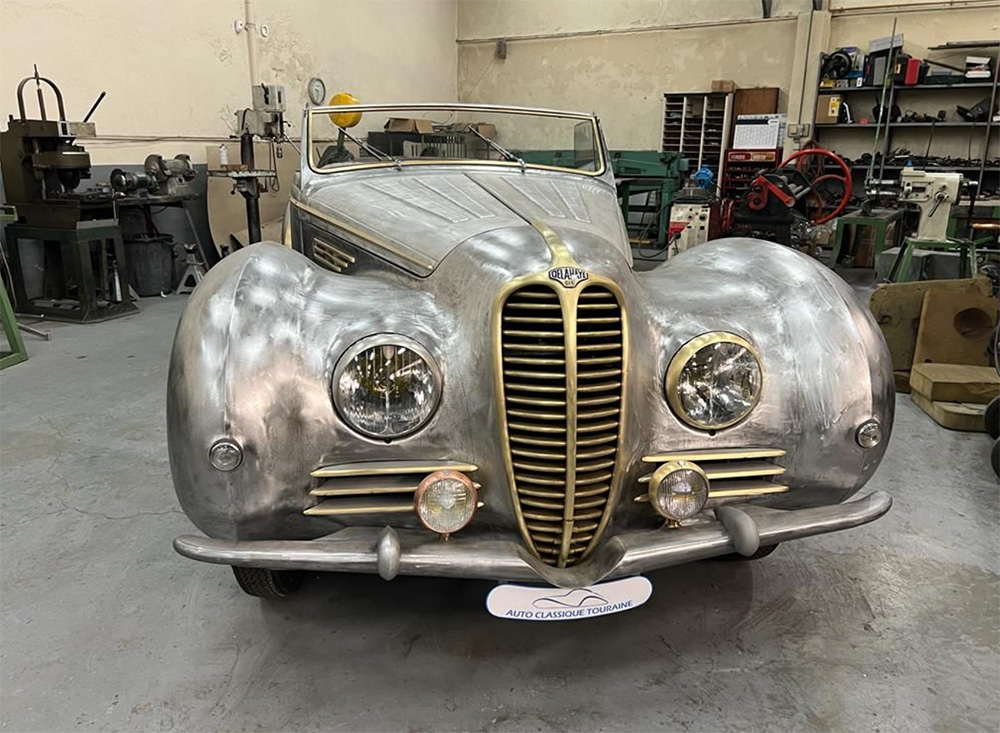
The 1947 Delahaye 135 MS Cabriolet ‘Vedette’ Chapron led Osenat’s sale with an €800k-1m estimate; one of just five Vedette Cabriolets believed to have been built, it was the only one not to be on US soil. The Vedette was Chapron’s first post-war Paris Motor Show car, shown in 1947. Originally finished in a two-tone paint scheme, it was sold off the show stand to the Dandelot family. The Dandelots kept the car for five years, before selling it to an Alpes Maritimes company called Moustiez, which kept it for a few years before selling it on. It then had several Parisian owners, before entering the stewardship of Mr Sabrié in 1962. He would keep the car until 2018, and it is currently under restoration at Touraine. It sold for €408k.
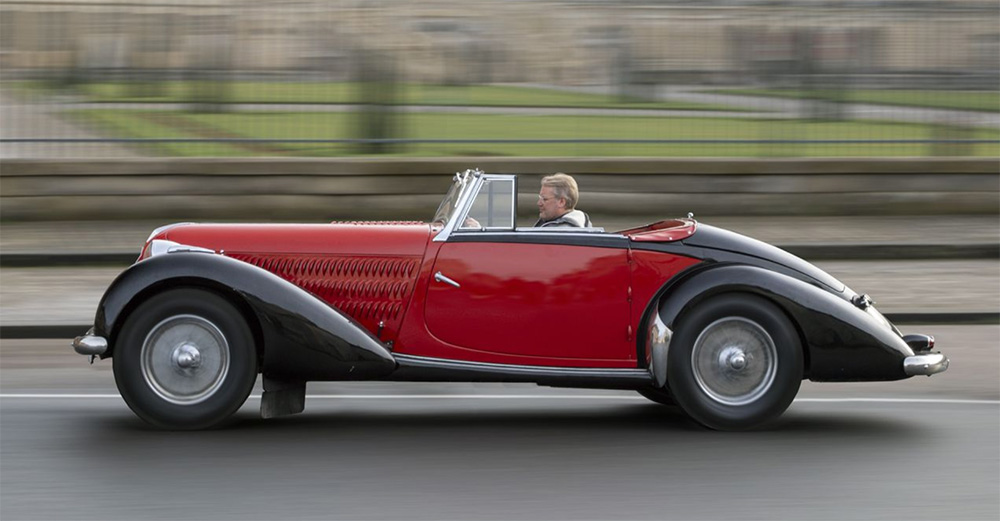
This 1937 Talbot T150 C Roadster was bought new by M Fayet, an industrialist in Saint-Étienne, at the 1937 Salon de l’Auto, where it is believed this car was an exhibit. Fayet facelifted the Talbot in the late 1940s, changing the grille and bumpers. At the time the car was red, as were all of his vehicles, but after his son lost his life while borrowing one of the fleet, all his cars were repainted black. Following the Talbot’s sale to masonry contractor and vintage car collector Bruno Dalmas in 1977, it was returned to its original configuration. Estimated at between €600k-900k, it sold for €468k.
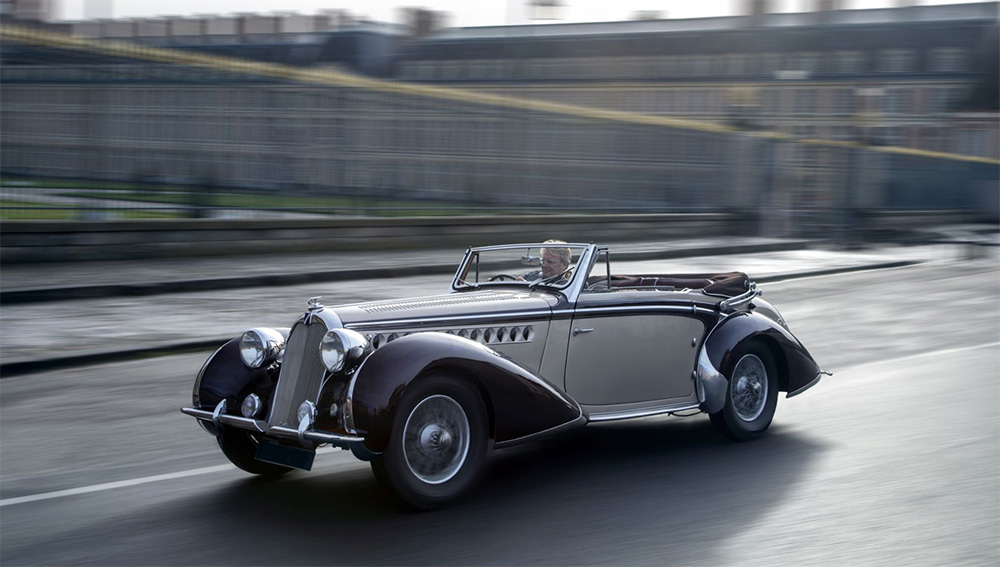
This 1939 Talbot-Lago T23 Cabriolet Prototype by Chapron was a special order from the Talbot factory to Henri Chapron, to evaluate for series production. Initially owned by Talbot, official records show a change of ownership on May 9, 1940 – one day before the German offensive – suggesting the car was sheltered during the war. The T23 entered the vendor’s ownership in 2009, via an American collector who had owned it for 20 years. He believed that the car had been imported immediately after the Liberation, having been requisitioned and painted black by German occupying troops, but the auction house’s investigations indicate otherwise. The T23 was then found in 1948 by Charles Huc in Bordeaux, and then bought by several French and American enthusiasts, heading to the US in 1956. Estimated at €250k-350k, it sold for €264k.
RM Sotheby’s
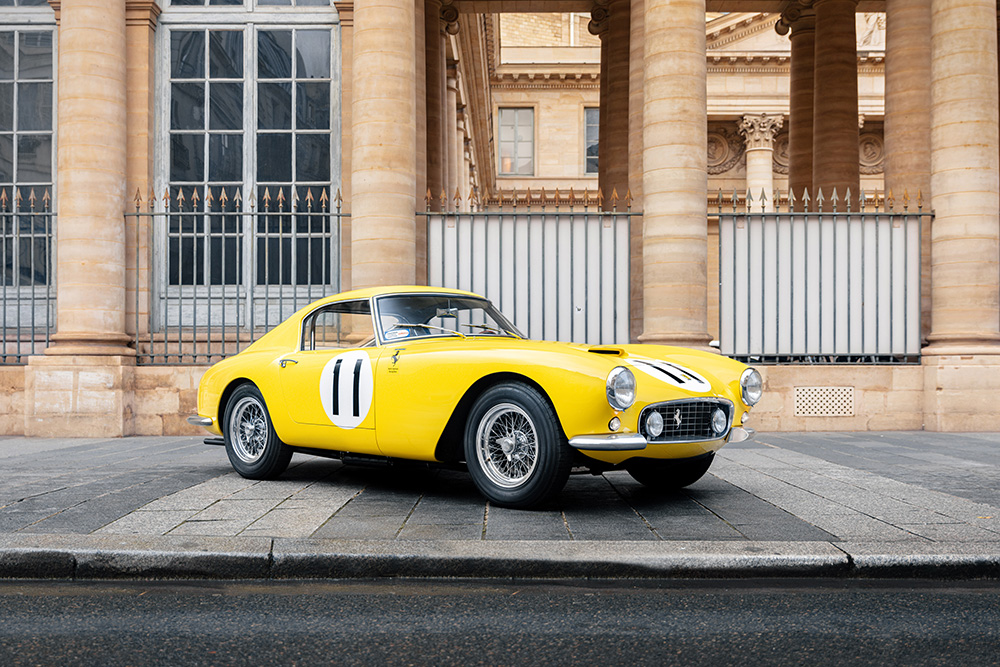
RM Sotheby’s star lot did the business on the night – this 1960 Ferrari 250GT SWB Berlinetta Competizione was, after all, chassis 1773 GT, the one that garnered a fifth place on the model’s debut at the 1960 Sebring 12 Hours. One of just 45 aluminium-bodied Competizione cars built in 1960, it was fitted with a more powerful Tipo 168B ‘hot rod’ engine. Entered into the race by the Luigi Chinetti Racing Team with George Arents and Bill Kimberly behind the wheel, it took seventh place overall, as well as the fifth-place class finish. It would later be owned and campaigned by Bob Grossman and Bob Hathaway, before passing through several European and US collections, and then being awarded Ferrari Classiche certification in 2023. It sold for €10,158,125 against a €9m-11m estimate.
With regards to other Enzo-era Ferraris, an alloy-bodied 1966 Ferrari 275GTB/6C sold for €3,211,250 against a €2.7m-3.5m estimate, while a 1956 Ferrari 250GT Boano Prototype sold for €916,250 against a €1m-1.4m estimate. A 1971 Ferrari 365GTB/4 Daytona broke through its €425k-475k estimate to land on €533,750, and a 1991 Ferrari Testarossa sold for €252,500 against a €180k-220k estimate.
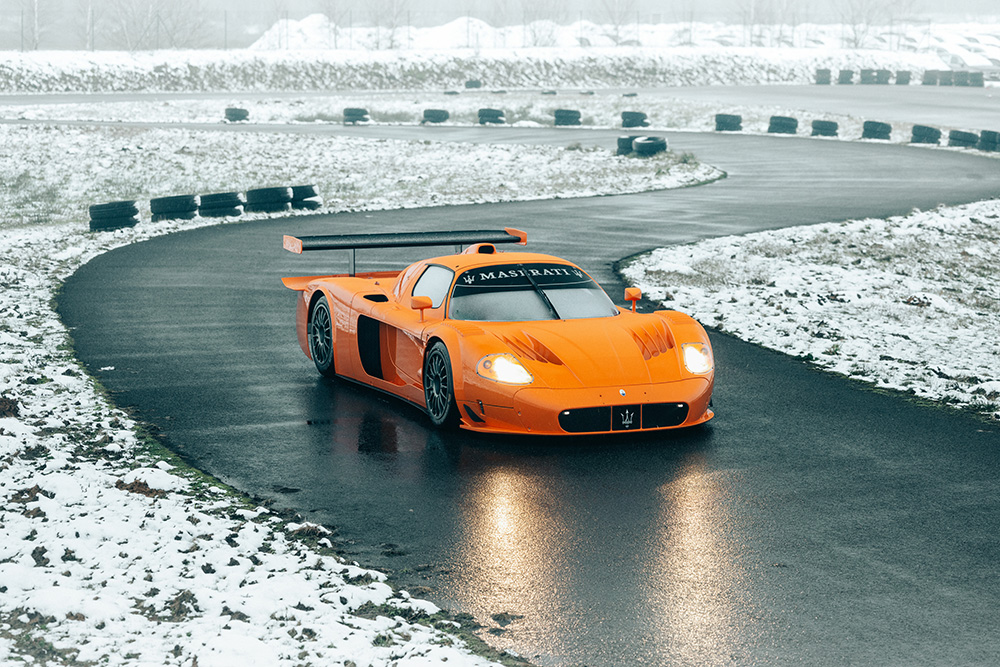
RM Sotheby’s sale featured many post-2000 hypercars, and as we mused in our preview piece, perhaps the tech/crypto market that fuelled this sector of the market wasn’t quite ready for such a glut of high-end hypercars. On the balance of the results, there’s some justification for that – while the above 2007 Maserati MC12 Versione Corse sold for a mid-estimate €3,042,500, the majority of these high-hitting hypercars failed to land.
Of the top ten road cars by pre-estimate value, seven were of the modern hypercar breed, and the only other example to find a home, other than the MC12, was a 2021 Koenigsegg Regera, which sold for €2,423,750. Among the casualties were a 2016 Ferrari LaFerrari, Ferrari Enzo, Bugatti Chiron, Porsche 918 Weissach Spyder and Lamborghini Centenario Roadster, although just outside the top ten, a 2015 McLaren P1 sold for €1,017,500 against a €900k-1.2m estimate, as did a 2022 Ford GT Carbon Series, which sold for €792,500 against a €750k-1m estimate.
Further down the price brackets, there were some interesting results for modern classic collectables. While a 2004 RenaultSport Clio V6 255 finished at a mid-estimate €80,500, as did a 1991 Alfa Romeo SZ at €69k, a 2005 Mercedes-Benz CLK DTM AMG Coupé sold for €460,625 against a €395k-450k estimate. A 2020 Alfa Romeo Giulia Quadrifoglio ‘Alfa Romeo Racing Edition’ – a special edition to celebrate Alfa’s return to F1, which featured two-tone red and white livery, a 28kg lighter kerbweight and carbon parts – sold for €120,750 against a €70k-90k estimate.
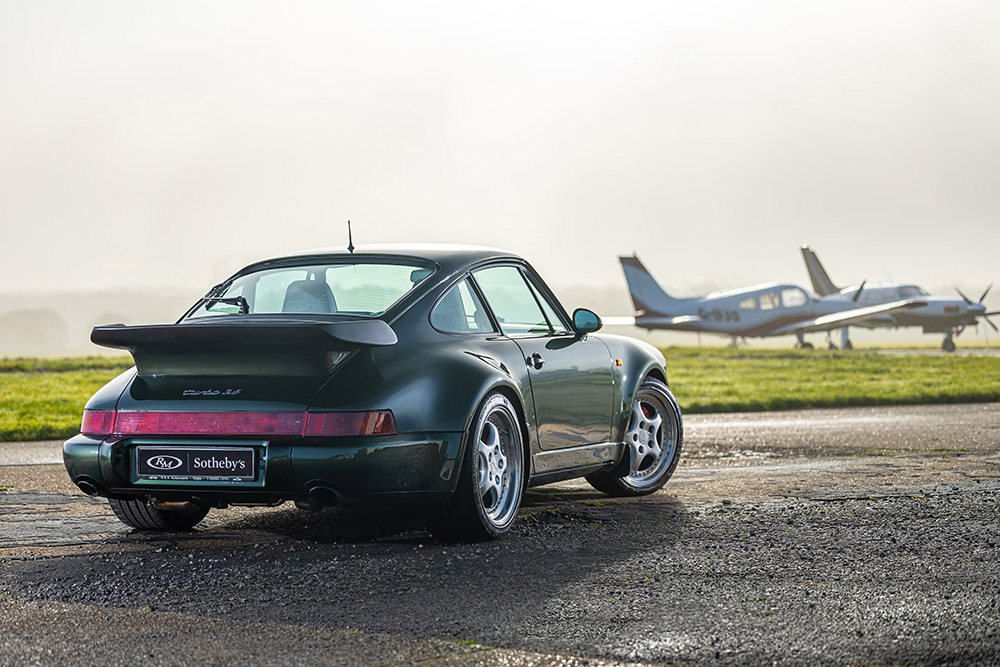
Perhaps the biggest shock result was this 1993 Porsche 911 Turbo 3.6. This particular version of the 964 generation has experienced intense demand and interest. While it is the version used in the film Bad Boys, the model has found a following in its own right as the last of the rear-wheel-drive, air-cooled 911 Turbos, if you view the 993 GT2 as a separate model. It’s also the last of the raw 911 Turbos, as the 993 model had four-wheel drive and a luxury focus as it became the de facto GT car replacement for the 928.
This particular example was guided at €175k-225k, yet it more than doubled the upper estimate with a €511,250 result. Why? Well, this LHD but UK-market car was finished in special-order Oak Green Metallic over a green interior, and was one of just three built to this specification. The first owner kept it for a year, and then sold it to the vendor. With such a rare specification, it was always going to be one to watch, but this result came out of the blue. Expect more Turbo 3.6s to hit the market over the coming year – but specification and colour combinations are key.
The current king of 1990s road-going Porsches is still the 993 GT2, but RM Sotheby’s didn’t sell its 1996 example against a €1.2m-1.4m estimate. On the subject of the GT2 moniker, there was a 2004 Porsche 911 GT2 ClubSport, estimated at an initially eye-raising €400k-500k – most 996-era GT2s are around half that. Look closer, however, and it became apparent that it was a very rare version. Just 16 Mk2 ClubSports were made, with carbonfibre trim, 483bhp engine, updated suspension and special alloy wheels. It was not promoted by Porsche, and its purchasers tended to be company insiders – as was the case with this example, which was ordered new by the managing director of Porsche Wendecar in Varese, Italy.
One of two black-over-black examples built, and the only one with body-coloured wheels and rear centre console, it sold for €291,875, illustrating the gulf in prices between water-cooled and air-cooled 911s. While equating the original 993 GT2 with a 996 GT2 is folly – the former was a homologation special, the latter wasn’t – the comparison with the 964 Turbo 3.6 is perhaps a closer relative to illustrate the disparity.
